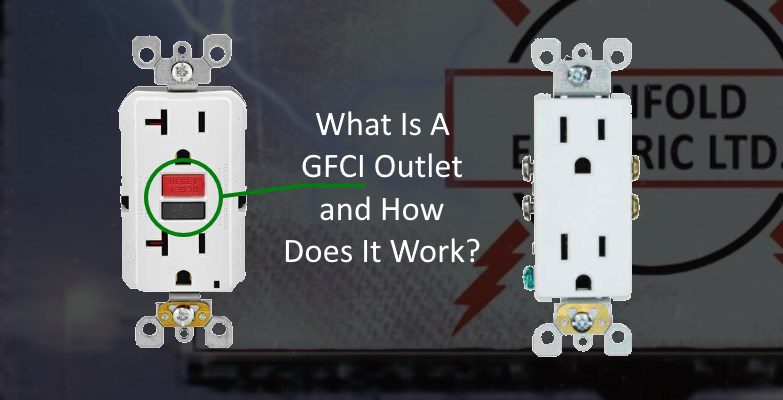Have you ever noticed that some of the electrical outlets in your home look different than the others? If you have ever wondered why that is, we have answers. Some of the outlets in your home may have small buttons located between the electrical outlets while others do not. The electrical outlets with a reset and test button are GFCI outlets and serve an important purpose in your home.
GFCI stands for ground fault circuit interrupter and this type of electrical outlet is an important safety component of your electrical system. A GFCI is used to detect an electrical current leakage, and in turn, helps to prevent overheating of electrical wires, fires, and reduces the risk of electrical shocks or burns. But how does a GFCI work and why should I make sure I have them in my home?
How Does a GFCI Work?
A GFCI works by continuously monitoring the amount of electricity that is flowing to a circuit. If something isn’t right the GFCI will trip and shut off the circuit. This helps to prevent overheating and fires, but it also turns off the power to the circuit when something unexpected happens such as dropping an electrical appliance into nearby water. For this reason, it is very common for GFCI outlets to be installed in bathrooms or any place where water is nearby such as electrical hook ups for pool installations or electrical hook ups for hot tub installations.
It is a good idea to ask your electrician about the status of GFCI outlets in your home. In Ontario, it is required to have GFCI outlets for any electrical receptacles near sinks and also for outdoor receptacles. Other areas may have different regulations for this type of electrical outlet. Whether it is required in your area or not, it is a good idea to have GFCI outlets installed in your home to protect against injuries and fires. If your older home does not have a GFCI outlet consider reaching out to a licensed electrician to have one or more installed.
What Can Cause a GFCI Outlet to Trip?
If your GFCI outlet has tripped, it means it has done its job to keep you and your home safe. GFCIs’ are sensitive and can detect even small disruptions in electrical currents. Even unsuspecting things such as too much dust can cause a GFCI to trip but in most cases, water or an issue with the insulation of your wiring can cause the GFCI to trip.
How to Reset a GFCI Outlet
In many cases simply pressing the reset button on your GFCI will do the trick and result in the power being restored to the electrical outlet. But it is important to consider why the GFCI tripped in the first place. There can be many reasons why your GFCI will trip, and some can be due to serious electrical issues. Always take a moment to consider what could be going on to trip the GFCI and do not dismiss the problem if it is happening continuously.
How to Tell if a GFCI Outlet Is Not Working
If you have tried to test or reset your GFCI and it is no longer restoring the power, you likely have an issue that will require the help of a certified electrician. You may not be able to learn how to tell if a GFCI is bad on your own, but messing around with the electrical components of your home is never a good idea.
GFCI’s are an important safety tool and should be installed in every home, particularly where electrical outlets may be close to sources of water. If you are experiencing an issue with your GFCI or it is continually tripping and you cannot understand why, always check with a licensed electrician to ensure the device is working properly and that there are no larger issues at play. Never try to troubleshoot your own electrical work, all electrical work must be completed by a licensed electrician to ensure both personal safety and that the work has been done correctly.
At Penfold Electric, we have more than 40 years of experience in providing residential electrical services. We would be pleased to answer your questions about GFCI outlets and help you to ensure that your home and those who live in it are protected. Contact us today to learn more about how you can make sure the electrical components in your home are safe. You can expect tenfold from Penfold.

